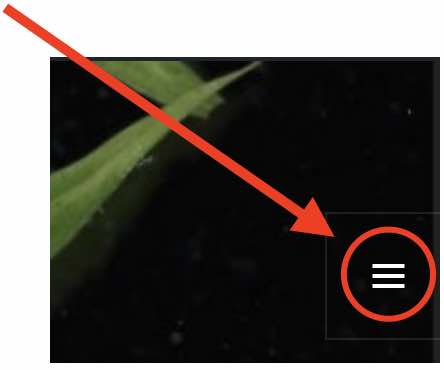First published 6 Jun 2015; latest amendments 4 March 2025.
The flowering plants and ferns of Cumbria

For the content, EITHER see the side-bar menu, left, OR (if there’s no menu, in a narrow view/phone/ tablet), click/tap the ‘three bars’ menu drawer icon (as right) at the top of your screen to reveal the page menu.
Please send comments and suggestions, plus any content for “News & Comment”, via the contact form at the bottom of that page.
The active Facebook group has news items and discussion on any aspect of Cumbrian botany. Do visit if you have a FB presence!
B.S.B.I. recording
The Recorders for the Botanical Society of the British Isles for the two Cumbrian vice-counties, Westmorland-with-Furness, 69, and Cumberland, 70, are Peter Bullard, Mike Porter, Gary Lawrence and Jeremy Roberts.
Contact Mike at carexmike [at] yahoo.co.uk with queries regarding recording of Cumbria’s plants.
The previous Recorder, Dr Geoffrey Halliday, retired on 5th March 2016 after (single-handedly) managing BSBI matters and recording in the county for over thirty years! There was a presentation to Geoffrey of a commissioned painting of Primula farinosa, a characteristic Cumbrian plant, by Sue Linton, SBA, CPGFS, followed by tributes, champagne and toasts, at Plumgarths, headquarters of Cumbria Wildlife Trust.
The 1997 publication of A Flora of Cumbria (see below) by Dr Halliday marked a watershed in our knowledge of the county’s flora.
Flora of Cumbria Recording Group
An active group, the Flora of Cumbria Recording Group, which functions within Cumbria Wildlife Trust, collected over half a million records for the B.S.B.I. Atlas 2020. We are now recording the next ’round’ for the BSBI, 2020–2039.
Contact Mike Porter (details above) if you are interested in joining the group. The group has a dedicated page on the BSBI site.
Meetings of the Flora of Cumbria Recording Group
The County of Cumbria
According to A Flora of Cumbria the total of non-critical species recorded since 1970 is 1,373 – an impressive indication of the range of habitats available, in such a relatively northern location. (See the next page for a tour around the county and some of its interesting and significant plants.)
The administrative county of Cumbria largely comprises the two vice-counties, 69 (Westmorland) and 70 (Cumberland), which have been treated together for botanical recording purposes.
At 2,613 square miles (6,767 square kilometres) Cumbria is the third largest county in England (only North Yorkshire and Lincolnshire are larger).
Its entire western boundary borders the Irish Sea, with important estuaries in the north (the Solway Firth), the southwest (the Esk and Duddon), and in the south, with the vast mudflats of Morecambe Bay.
To the north the wild ‘Border’ region abuts Scotland (vice-counties Dumfries (VC72) and Roxburgh (VC80), and the eastern boundary, down the length of the North Pennines, is shared with the vice-counties of South Northumberland (VC67), County Durham (VC66), and North-west Yorkshire (VC65).
In the south-east, Sedbergh District, actually part of VC65, is within the county of Cumbria, (and was treated in A Flora of Cumbria and The Rare Plant Register of Cumbria). To the south is West Lancashire (VC60).
Next page > The landscapes and flora of Cumbria
© in text & photographs. Copyright of photographs remains with the originator indicated.